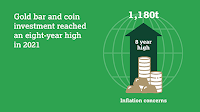- Small-scale gold mining is the major driver of global mercury demand, with South America accounting for 39% of this demand, according to a United Nations report on the highly toxic metal.
- Hair samples taken from indigenous communities in the Amazonian regions of Bolivia and Brazil showed mercury levels higher than the safe limits set by the World Health Organization.
- In Brazil in particular, mercury use has increased with a boom in illegal mining, which has been largely ignored – and in some cases even encouraged – by the government of President Jair Bolsonaro.
Artisanal gold mining is driving global demand for mercury, with 2,058 metric tons of the toxic metal contaminating water, land and air every year, according to a recent report. Mercury, Small Time Gold Mining and Human Rights,
The report, presented to the UN Human Rights Council on 20 September by Marcos Orellana, the UN Special Rapporteur on toxic substances and human rights, calls for an end to the mining, export and trade of mercury, as well as a ban on the use of mercury has gone. In small scale gold mining.
“An estimated 10 million to 15 million people were directly engaged in small-scale gold mining in 2017, including an estimated 1 million child laborers and 4.5 million women,” the report said. “It generates up to 20% of the global gold supply annually, equivalent to approximately 500 tonnes, with a market value of approximately $29 billion.”
Orellana, who teaches international environmental law at George Washington University in the US, found that demand for mercury used in small-scale gold mining stems from three major regions: South America (39%), East and Southeast Asia (37%). %), and sub-Saharan Africa (21%).
Most small-scale gold mining in South America is concentrated in the Amazon. In Brazil, it has gone “massive”. According to MapBiomas, a research collective that tracks land use changes through satellite imagery, small-scale gold mining overtook large-scale industrial mining in 2018, covering 107,800 hectares (266,000 acres) in 2020. 94% of it is in the Amazon.
The Intergovernmental Forum on Mining, Minerals, Metallurgy and Sustainable Development (IGF) estimates that there are over 450,000 artisanal miners, or garimpeiros, in Brazil. More than 20,000 work illegally inside the Yanomami indigenous territory alone.
Small-scale gold mining not only destroys vast areas of forests, but also leaves crater-like wastelands of the Moon. The most devastating aspect to both miners and people around the world is the use of mercury to extract gold from the ore.
Also known as quicksilver, mercury is liquid at room temperature. When heated, it evaporates into the atmosphere or flows into rivers, lakes and oceans, contaminating fish and thus entering the food chain.
Large illegal gold mining operations on the Uraricoeira River in the protected Yanomami indigenous territory in the north of Brazil, where small-scale gold mining has gone “large-scale”. Photo courtesy of Bruno Kelly / Amazonia Real.
Minamata disaster
In the 1950s, mercury caused one of the most infamous industrial disasters of the 20th century in the Japanese city of Minamata. Chisso Corporation, a petrochemical company, had been dumping waste containing methylmercury into the local creek for several years. This form of mercury bound to bacteria made its way up the food chain, and eventually caused widespread death, birth defects and neurological problems among local populations.
The response to the disaster gave rise to the Minamata Convention on Mercury (MCM) in 2013, which aims to protect human life and the environment from mercury pollution. Ratified by 128 countries, including Brazil, in August 2018, the treaty regulates the production, import and export of mercury as well as mercury-containing products.
“It’s time to turn off the mercury tap,” said Lee Bell, mercury policy advisor at the International Pollutants Elimination Network (IPEN), in a press release following the publication of Orellana’s report. IPEN is a global network of over 500 nongovernmental organizations dedicated to eliminating toxins and pollutants from the environment. It served as a major source of information for Orellana’s report linking mercury, small-scale gold mining and human rights.
“There is no valid reason to mine mercury and sell it on the global market,” Bell said. “We know that almost all of it is being directed to small-scale gold mining and deposited directly into the environment, contaminating waterways, fisheries and poisoning communities. Small-scale gold mining We must stop the international mercury trade immediately to end human rights abuses.
Experts say that while the MCM has been largely lauded as a step in the right direction, the convention has several flaws. Some countries requested exemptions on the use of mercury in products such as batteries, lamps, cosmetics, thermometers, and dental fillings that use mercury amalgam.
Contamination in bolivia
While the European Union and the US have banned mercury exports, many other countries continue to profit from the trade. Bolivia is the leading importer of mercury in South America.
According to the Bolivian Center for Documentation and Information (CEDIB), up to 200 metric tons were imported into Bolivia in recent years. Most of it is used in small-scale gold mining, not only in Bolivia, but also in neighboring countries.
“With the high price of gold and the availability of new technology, small-scale gold mining is getting out of control,” said Carmen Capriles, an NGO that aims to raise awareness about climate change and environmental degradation. Yes, told. Mongabe by phone from La Paz. “More and more gold is won, and it is the indigenous people who bear the consequences. I am afraid that this will be the worst situation not of this generation but of the times to come.
From 2019 to 2021, Reaccion Climaticos contributed to the study “Gender, Chemicals and Waste,” which includes a chapter on mercury use by artisanal gold miners working in Bolivia’s Beni River.
Capriles and his team took 65 hair samples from indigenous women in the Ayo Quibo and Portchuelo communities, and found mercury levels ranging from 3 to 32 parts per million (ppm). The maximum safe level set by the World Health Organization is 1 ppm, while the recommended level is a maximum of 0.58 ppm.
“Contaminated mothers will pass mercury through the placenta to their unborn babies,” Capriles said. “There is a serious risk that future babies will be born with neurological problems or birth defects.”
Gold miners operating balsa (dredges) on the Madeira River in the region of Rosarinho in the Brazilian state of Amazonas. Photo courtesy of Alberto Cesar / Amazonia Real.
Mercury in indigenous Brazilians
Full scale studies of mercury use and contamination have not been done in Brazil. Sporadic surveys, however, point to an increasingly alarming situation, especially since President Jair Bolsonaro’s administration has taken a hands-off approach to small-scale gold mining.
In 2019, the Institute for Indigenous Research and Training (Iepe) participated in a survey in the state of Amapa, taking fish samples from different locations in the Amazonian state. It found mercury in all 428 samples, with 28.7% of them at more than 1 ppm.
In 2021, Ipe took 34 hair samples from women in the municipality of Vila Nova in Amapa, and found that 68% had mercury levels higher than the WHO’s safe limit.
“We have just completed a study of fish markets in 18 cities in the Amazon,” Ipe’s media coordinator Desio Yokota told Mongabay in a video interview. “We are still analyzing the data, but our preliminary results confirm a trend towards higher levels of mercury in fish.”
In 2020, the Osvaldo Cruz Foundation (FioCruz), a federal research institute for biological sciences, partnered with WWF Brasil to test samples from indigenous Munduruku communities in the Amazonian state of Para. They found that 60% of the participants had mercury levels above the WHO limit. All 88 fish samples taken as part of that study were also contaminated with mercury.
According to the Orellana report, a similar study among the indigenous Yanomami of Roraima state, who have been deeply affected by small-scale gold mining in their region, was blocked by FANAI, Brazil’s indigenous affairs agency. Under Bolsonaro, the agency has adopted a number of measures considered against the interests of the country’s indigenous peoples.
Bolsonaro also issued a presidential mandate just months after taking office in April 2019, in which he abolished the National Chemical Safety Commission (CONASQ), among hundreds of other multi-stakeholder councils. Created in 2000, CONASQ was tasked with improving the management of chemical substances in the country, including implementing the Minamata Convention. It included 22 representatives from the public, private and non-governmental sectors.
Experts say that the legitimate use of mercury for dental applications is often used to distribute mercury for artificial gold mining. In February 2018, the federal environmental protection agency IBAMA seized 430 kg (950 lb) of mercury at Quimidrol, a chemical company in the southern state of Santa Catarina. According to IBAMA, Quimidrol was Brazil’s largest importer of mercury, having sold 6.8 metric tons of the chemical over the past three years. Officially, mercury was labeled for dental use. But IBAMA found that Quimidroit had used a shell company in the Amazonian state of Mato Grosso to distribute the metal to gold miners in the region. The address used by the shell company turned out to be the address of a grocery store.
Iepe and Fiocruz contributed information to Orellana’s report, with Fiocruz also producing a set of recommendations to address rising rates of mercury contamination. These include routine testing of hair samples from at-risk communities, mandatory notification of chronic contamination, establishing a protocol for primary care and a risk management plan for affected communities, and adequate monitoring of mercury contamination in fish.
A grain of gold after it has been processed with the help of mercury. Photo courtesy of Cesar Araujo/Amazonia Real.
A ‘national challenge’
On 10 October, the Brazilian Society of Sciences (ABC) presented the article “Contaminated by mercury: why do we need an action plan?” Report published. The report states that while Brazil’s constitution bans mining on indigenous lands, there has been a “systematic invasion of garimpeiros” in recent years “without the state fulfilling its role to uphold the constitution”.
The report states that this has resulted in the death of indigenous people and environmental destruction, as well as widespread contamination of ecosystems with mercury.
It also calls for an updated mercury inventory, noting that the last one was done in 2016, before the Bolsonaro presidency, and was published in 2019. The amount of mercury emissions in that inventory was estimated to range from 69 to 913 metric tons.
A preliminary study presented at the CONASQ working group on mercury in 2018 estimated that small-scale gold mining in Brazil used up to 221 metric tons of mercury.
With small-scale gold mining exploding under Bolsonaro, mercury emissions are likely to be much higher today.
The ABC calls mercury contamination a “national challenge” calling for mobilization at all government levels, the private sector, and social and research organizations to implement some of the recommendations listed in its report.
They include resuming Brazil’s active participation in the Minamata Convention, updating the mercury emissions inventory, replacing products and processes that rely on mercury with alternatives, and last but not least, “on all illegal mining.” promotion of “banning”.
By Harold Vazquez
Source: BizCrastNet











